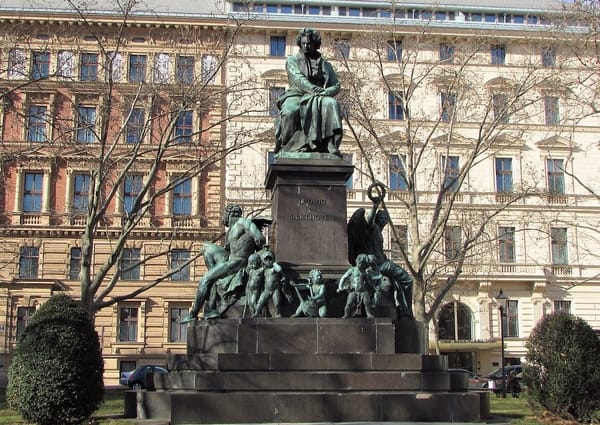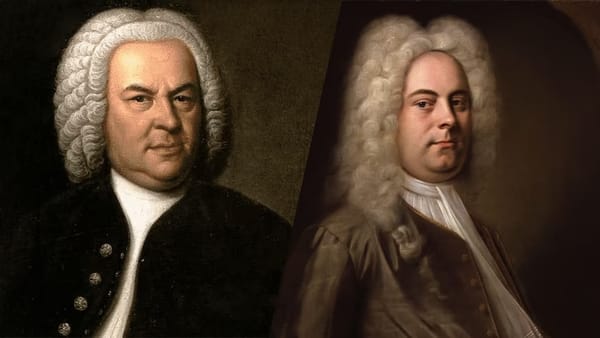Ballet and Opera: A Symbiotic Relationship
Ballet and opera share a deep-rooted synergy, blending music, movement, and drama to elevate storytelling. From historical collaborations to contemporary innovations, their partnership offers audiences a layered, immersive experience that transcends individual art forms.

The worlds of ballet and opera have long coexisted in the realms of high art, sharing not only theaters and audiences but also an intertwined history and artistic vision. While distinct in form, these two art forms have developed a symbiotic relationship, enriching each other through collaborations that combine visual spectacle with musical and dramatic depth. This article delves into the interconnected history of ballet and opera, explores how each form has influenced the other, and examines their continued evolution as mutually reinforcing expressions of human emotion and storytelling.
Origins of Ballet and Opera
Opera and ballet emerged in the European courts of the late Renaissance and early Baroque periods. Opera, which originated in late 16th-century Italy, was born from an attempt to revive Greek drama and bring music and poetry together. The first opera, Dafne, composed by Jacopo Peri in 1597, laid the foundation for an art form that would use singing, music, and drama to convey narrative.
Ballet, on the other hand, has its roots in courtly dances, originating in Renaissance Italy before flourishing under the patronage of French royalty, particularly King Louis XIV in the 17th century. Court ballets began as masked dances meant to entertain, with lavish costumes and set designs. King Louis XIV, an avid dancer himself, is credited with formalizing the technique and style of ballet, founding the Académie Royale de Danse in 1661. Over time, ballet evolved from a social dance performed by nobility into a structured, dramatic art form.
The Baroque Era: Ballet Meets Opera
The Baroque period (1600–1750) saw the first formal collaborations between ballet and opera, as the two art forms became increasingly integrated in court performances. Operas began incorporating dance sequences to enhance their visual appeal and dramatic effect. This fusion is evident in the works of Jean-Baptiste Lully, a prominent composer in Louis XIV’s court, who often included dance interludes in his operas. In fact, Lully’s tragédies en musique (tragedies in music) were known for featuring balletic elements as part of the narrative, bringing together music, dance, and drama on a single stage. This fusion was particularly popular in the French court, where balletic interludes became an expected part of operatic storytelling.
In Italy, too, opera and ballet began to merge. The concept of the divertissement, a sequence of dance or musical interludes within a dramatic performance, became a common feature in operatic works. These dance sequences were not merely ornamental but often served to heighten the emotional impact or provide contrast to the opera’s narrative arc. The integration of ballet into opera at this time marked the beginning of a symbiotic relationship where the narrative, musical, and physical elements created a fuller, more immersive experience.
The 19th Century: A Flourishing Partnership
The 19th century marked a golden age for ballet and opera, particularly in France and Russia. During this time, ballet became more technically refined and expressive, while opera underwent significant transformations in both thematic content and structure. The Romantic movement, with its emphasis on emotion, the supernatural, and the individual’s relationship with nature, influenced both art forms profoundly.
In the world of opera, composers like Giacomo Meyerbeer and Charles Gounod began integrating ballet scenes as key elements within their works. This was particularly evident in the grand opéra tradition, which emerged in France and required spectacular visual and musical elements, including ballet. Meyerbeer’s Robert le diable (1831) featured a famous “ballet of the nuns,” which was integral to the opera’s supernatural theme and helped to advance the plot rather than simply decorate it. This trend continued in other operas, such as Gounod’s Faust, where ballet scenes heightened the dramatic tension and allowed for an expansion of the narrative beyond the constraints of song.
Russia also played a crucial role in bringing ballet and opera together. Russian impresarios such as Sergei Diaghilev and composers like Pyotr Ilyich Tchaikovsky created works that combined the lyricism of opera with the expressive power of ballet. Tchaikovsky’s The Sleeping Beauty, Swan Lake, and The Nutcracker are prime examples of ballets that, while not operas, were written with an operatic approach to narrative, creating emotional resonance through the music itself. Tchaikovsky’s treatment of ballet scores as symphonic compositions elevated ballet music to a new level of sophistication, much like opera. These ballets were later adapted for operatic stages in Russia and Europe, underscoring the fluidity and shared language between the two art forms.
Symbiosis in Artistic Expression and Storytelling
Ballet and opera share a unique capacity for conveying deep emotional narratives through music, movement, and staging. Their symbiosis is most evident in the way both art forms use physical expression to deepen emotional impact. In opera, a well-choreographed ballet scene can express emotions or themes that go beyond words. Likewise, ballet often borrows operatic elements to enhance its storytelling, using music to guide the audience through a non-verbal narrative.
Richard Wagner’s Gesamtkunstwerk (total work of art) philosophy exemplified the synergy between ballet and opera. Wagner envisioned opera as a synthesis of all the arts—music, poetry, dance, and visual art. Although Wagner did not include ballet in his own operas due to his artistic ideals, his influence inspired others to explore the integration of dance and drama. Wagner’s philosophy resonated with composers such as Igor Stravinsky, whose ballet The Firebird and opera-oratorio Oedipus Rex reflect a harmonious fusion of dance, music, and dramatic storytelling.
In ballet, narrative themes often mirror those found in opera. Both forms have tackled universal themes of love, betrayal, sacrifice, and redemption. Giselle, one of the most celebrated Romantic ballets, embodies a tragic love story akin to the operatic tales of doomed romance. The emotional potency of ballet lies in its non-verbal communication, relying solely on movement and music to convey a story, much like opera relies on a libretto and score to amplify its narrative. When ballet and opera combine, they enhance each other’s strengths, producing a layered experience that appeals to the senses on multiple levels.
The Ballet-Opera Relationship in the 20th Century
The 20th century witnessed new experimental approaches in both ballet and opera, which further strengthened their symbiosis. Composers and choreographers explored more abstract themes, moving away from the strict narrative frameworks of the 19th century and embracing the avant-garde.
In 1910, Sergei Diaghilev’s Ballets Russes premiered Igor Stravinsky’s The Firebird, marking the beginning of a series of collaborations that included Petrushka and The Rite of Spring. These works incorporated elements of Russian folk music and myth, using ballet as a medium for operatic-level storytelling. Diaghilev’s company became known for its collaborations with leading composers and artists, breaking traditional boundaries and setting the stage for ballet and opera to explore new stylistic territories together.
Meanwhile, operatic compositions increasingly integrated dance as an essential part of the performance. Benjamin Britten’s The Prince of the Pagodas and Alban Berg’s Lulu exemplify this trend, as their compositions blur the boundaries between singing and dancing. Britten’s work, though a ballet, was informed by operatic structure, while Berg’s opera included dance sequences to convey the psychological depth of the story. This experimentation has enabled opera and ballet to grow beyond conventional genres, allowing contemporary productions to use both forms innovatively.
Ballet and Opera Today: A Continued Evolution
Today, ballet and opera continue to push artistic boundaries, with cross-genre collaborations on the rise. Contemporary choreographers like Matthew Bourne and Christopher Wheeldon have reimagined classic operas as ballets, while opera directors like Robert Lepage and Katie Mitchell incorporate dance into their productions. New multimedia technologies, such as digital projections and 3D soundscapes, have allowed for more ambitious productions where ballet and opera coexist and complement one another.
Additionally, opera companies increasingly include ballet segments in productions to cater to modern audiences seeking multi-sensory experiences. The Metropolitan Opera, for example, has staged productions of Aida and Samson et Dalila that feature ballet sequences as integral components of the dramatic narrative. By presenting ballet as an essential part of the opera rather than an interlude, these companies honour the longstanding tradition of their partnership while adapting to contemporary expectations.
Conclusion
Ballet and opera, though distinct in form, share a profound and symbiotic relationship that enriches both art forms. From their origins in the courts of Europe to their integration on the grand stages of France and Russia, ballet and opera have been bound by a shared goal of elevating human emotion and storytelling through a combination of music, movement, and visual spectacle. This partnership has evolved through centuries, with both art forms adapting to new trends and technologies while retaining their classical roots.





